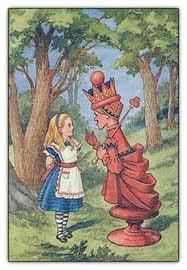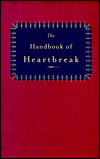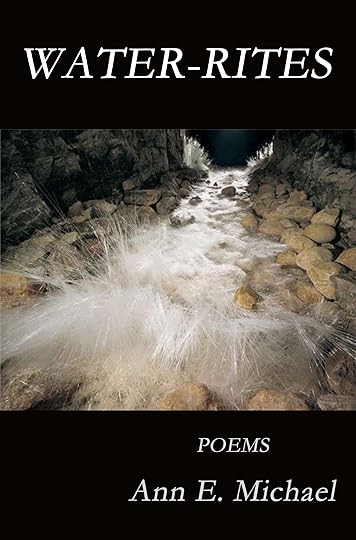Ann E. Michael's Blog, page 72
June 22, 2013
Myotonia congenita
Here’s the “Fainting Goats” poem I referenced in an earlier posting. It appears in the Spring 2013 issue of Philadelphia Poets.
~~
Fainting Goats
Next door, the neighbor’s raising goats.
I hear them bleating in the mornings while they wait
for feed, their stuttering punctuates the day.
Evenings, they murmur like a small crowd at a magic show.
The goats fall into a brief paralysis at any sign of danger:
they bleat and stiffen, roll onto their sides like live piñatas,
legs outstretched, then collect themselves and bolt
fast as they can, to the far side of the pen.
My neighbor says they’re bred by shepherds
to distract roving predators from the sheep,
sacrificed to the wolf or bobcat if the startle
lasts too long or if the predator’s swift.
Think of the white sheep fleeing in droves,
shunting themselves away from their fallen companion,
trammeling hillside toward safety while the goat
recovers, bellering, attempting its escape.
My neighbor chose them for their novelty,
chases them with an umbrella, makes certain
they maintain the reflex that causes their bodies
to seize and stumble. This is how
we keep our frailties alive, inbred, and how we fall,
sometimes luckily, sometimes into the jaws
of a starving winter day, asking ourselves if it’s destiny
or heredity, lost before we determine the answer.
~~
For other poems, see the Poems page here. Or buy my books–see the Books page here.
Thanks!


June 18, 2013
Untermyer Park
~
My enthusiasm for gardens of all kinds seems inextinguishable, and my tastes are wide-ranging. I love cottage gardens, wilderness-style native gardens, garden rooms, rooftop gardens and multi-acre gardens (ah, the Biltmore Estate...), sculpture gardens, vegetable gardens, potager and herb knots and medicinal plots, historic gardens (Monticello, Bartram’s...) and my grandma’s truck patch, may my grandma rest in peace. Also Asian gardens, European gardens, alpine gardens, undersea gardens (I have yet to visit one, but I would love to do so)–and I’m intrigued by trick gardens like the one at Hellbrunn in Salzburg and themed gardens and miniature railway gardens (there’s a fun one near me at Morris Arboretum). Oh, and I adore arboretums. Or should that be arboreta?
Gardens, like art and literature, reflect unique visions and aesthetics. And they are completely process-oriented: the results, if you can call them that, are fleeting and changeable. Maybe that’s one reason they appeal to me.
~
Recently, I had a garden adventure that was part nostalgia, part history, part aesthetic–and a lovely day out with my sister, as well. We decided to return to a park that had been important to us when we were very young, for the three years we lived in Yonkers, NY (see my post on the Grinton Will Public Library).
My family lived in houses that had almost non-existent backyards, which is not uncommon in Yonkers–a city built on hills and cliffsides, dwellings crowded practically on top of one another in some parts of town. Our parents took us to nearby Untermyer Park for picnics, exploration, and play. Situated above the Hudson River, the park was like The Secret Garden, Alice in Wonderland, ancient Greece, and Narnia, all rolled up into one mysterious and lovely, part-wild, part-formal place. The walled garden and the grotto beneath the Temple of Love were favorite places.
When we lived there, the park was reasonably well-kept, though not planted with many blooming flowers: lawns mowed, shrubs and trees somewhat pruned, no graffiti, a few paths cleared. The park belongs to the City of Yonkers, deeded to the public by Samuel Untermyer–a civic-minded gentleman who for some reason did not also endow the place. As a result, maintenance of the original 150 acres quickly became untenable and the city sold off much of the land. The 1862 mansion was razed, a hospital began to expand on some of the property, and the former glory rapidly decayed, overgrown by trees and weeds.
Which made it all the more exciting to people who are very young. It was entirely possible to believe there might be lions or mountain goats or fairies in the fringes of the woodland. The columns evoked stories and myths. The long reflecting pools, though not entirely full of water, were exotic canals or dangerous rivers or chasms. There were stairs and doors in surprising places, and overhanging vines, and grand old trees.
My sister and I share happy memories of the park. We had heard that it went through ups and downs depending upon the economy, the health of the city, grants, taxes, etc. Apparently the early 70s saw considerable graffiti on the walls we loved and on the grotto rocks. We heard indigent young people liked to hang out there and get stoned. We heard the woods had become littered and full of vermin. In the 1980s, some clean-up occurred; the park had made it onto the federal Historic Register. The walled garden was kept clean, and most of the graffiti tags erased. Deer roamed the place, eating everything but the mugwort, phragmites, and Japanese knotweed. The city still had trouble funding maintenance on the park, let alone restoration.
My sister went searching for Untermyer recently and learned that the city of Yonkers has hired two full-time gardeners and has partnered with a non-profit organization in an attempt to get more serious about restoration of this special place. And last weekend, she and I went on a tour with the enthusiastic gardeners and their young and enthusiastic apprentices.
And fell in love with the park all over again.
Even in its partially-wild, partially-decayed state, Untermyer Park compels the visitor. People genuinely gasp as they enter the walled Persian-style garden through the Artemis gate (the walled garden has been largely restored and looks pretty fabulous). The website offers an overview of the amazing history behind the place and includes some photos from the Roaring 20s, when Greystone Estate was the place to attend a party.
The “Persian” garden symbolizes Eden; indeed, the word “Paradise” has its etymological roots in Persia (Iran) as a compound of the word pairi- “around” and the word diz “to make, as in a wall.” Here’s a photo I took with my sister’s phone. The snapshot doesn’t do the place justice, of course; nor can it capture the thrill we felt at returning to find an old, old friend in the full bloom of health.

Inside the walled garden, looking north at the amphitheater
Click here for Untermyer website.


June 17, 2013
“Next Big Thing”
A friend & colleague-in-poetry, April Lindner, has invited me to participate in the round-robin writing blog event (termed a “blog hop”) called “The Next Big Thing.” Thanks to Molly Spencer for coordinating this web-event, which has been going awhile, so she is no longer curating it as actively. At the end of this post, I’m linking my readers to a handful of other participants. From their sites, you can locate others…and so on! We hope to foster discovery of writers our own blog followers–or random visitors–are not yet familiar with, and to spur readership in general. I love to read, and I have a mission to introduce more people to reading, to poetry, and to contemporary artists–especially word-artists. Therefore, I’m thrilled to be asked to add my 2¢ to The Next Big Thing…even though some of the formulated “interview questions” lend themselves more to fiction writers than to poets. Some of the answers may end up sounding a bit far-fetched, or simply silly.
But poets do possess senses of humor, folks. We are not all depressive garret-dwelling introverted cynics. [Ha!]
~
Now to commence with the interview questions:
What is the working title of your next book (or story, or project)?
I have two. One manuscript is finished, and I am seeking a publisher–that one is titled The Red Queen Hypothesis. The work-in-progress is tentatively called Barefoot Girls.
Where did the idea come from for the book?
 The Red Queen Hypothesis seems to be culled from a bunch of my poems musings on science. I love science because it is so weird, much odder than so-called real life. Also, the nomenclature…I swoon over those latinates, Greek roots, and things-named-after-other-things. Here’s the biological definition from Wikipedia: “an evolutionary hypothesis which proposes that organisms must constantly adapt, evolve, and proliferate not merely to gain reproductive advantage, but also simply to survive while pitted against ever-evolving opposing organisms in an ever-changing environment.” As Alice and the Red Queen are hurriedly running through the chessboard of Wonderland in Through the Looking-Glass, the Queen remarks, “Now, here, you see, it takes all the running you can do, to keep in the same place.” Don’t we often feel that way?
The Red Queen Hypothesis seems to be culled from a bunch of my poems musings on science. I love science because it is so weird, much odder than so-called real life. Also, the nomenclature…I swoon over those latinates, Greek roots, and things-named-after-other-things. Here’s the biological definition from Wikipedia: “an evolutionary hypothesis which proposes that organisms must constantly adapt, evolve, and proliferate not merely to gain reproductive advantage, but also simply to survive while pitted against ever-evolving opposing organisms in an ever-changing environment.” As Alice and the Red Queen are hurriedly running through the chessboard of Wonderland in Through the Looking-Glass, the Queen remarks, “Now, here, you see, it takes all the running you can do, to keep in the same place.” Don’t we often feel that way?
PBS has a good little article on it here, for those who want to learn a little science with their poetry.
Barefoot Girls evolves as I revise. As of now, the poems are memoir-based about being a teenaged girl in New Jersey, and many of them allude to Bruce Springsteen songs. The collection is, I suppose, lyrical narrative in style. Mostly free verse but with some ballad-type pieces and even a sonnet or two. I may have some trouble getting that manuscript into print because I have to get Springsteen’s permission to use a couple of epigraphs. God knows how long that will take–or if it is even possible!
What genre does your book fall under? Poetry. No other genre need apply.
Which actors would you choose to play your characters in a movie rendition?
I would love to have Gary Cooper or Barbara Stanwyck play characters in my poems, which makes about as much sense–since they are dead–as making a movie of a poetry collection.
What is the one-sentence synopsis of your book?
Life, love, family, environment, death, memory, animals, youth, curiosity, god.
Will your book be self-published or represented by an agency?
1) No.
And 2) –you have got to be kidding! Literary agents in the USA generally avoid poets as though we harbor west Nile virus.
How long did it take you to write the first draft of your manuscript?
Four years, generally, though some individual poems evolve more slowly. My first full-length collection, Water-Rites, took much longer…closer to ten years.
Who or what inspired you to write this book?
Ah, the “inspiration” question. I have a deep indifference to the question of inspiration. I suggest you read other writers on this topic.
What else about your book might pique the reader’s interest?
The Red Queen Hypothesis includes numerous poems that employ formal strategies, as well as plenty of nonce forms; I think of them as experiments, the way scientists frame their work though experiment.There are also philosophical undertones. It is a book of questions that are scientific, speculative, spiritual and philosophical. Barefoot Girls, the project in process, also poses questions–but of a different kind. More social and gender-related questions, more coming-of-age curiosity. The fact that these poetry pursuits came one after the other intrigues me since they seem in many ways fairly unrelated. Perhaps I will discover the relationship as I continue to revise Barefoot Girls.
Meanwhile, if anyone can suggest a publisher for RQH, I’m all ears!
Who are you tagging for The Next Big Thing?
~As The Next Big Thing is on hiatus, I suggest my readers browse for it or follow the links below that will lead to other links & literary discoveries!!
Here are some other Next Big Thing posts:
http://kathleenkirkpoetry.blogspot.com/2013/01/the-next-big-thing.html
http://jessamynsmyth.net/wp/the-next-big-thing-interview-kitsune/
http://wordcage.blogspot.com/2013/01/the-next-big-thing.html
http://juliebrooksbarbour.weebly.com/the-next-big-thing.html
http://boysinger.wordpress.com/2013/02/24/the-next-big-thing/
http://mollyspencer.wordpress.com/2013/01/29/sally-rosen-kindreds-next-big-thing/
http://thrillbending.tumblr.com/post/44531702707/the-next-big-thing-blog-hop#disqus_thread


June 6, 2013
On being understood
I’ve just learned that a poem of mine, “Fainting Goats,” was awarded a prize from the journal in which it appears, Philadelphia Poets. Liz Abrams-Morley was the judge.
To my delight, the editor of Philadelphia Poets (the lovely and talented Rosemary Cappello) requests judges to write their rationale for choosing the poems as winners, and here’s what Abrams-Morley has to say about “Fainting Goats.” She understands the poem, and that feels deeply rewarding to me.
A very close third place, Ann Michael’s “Fainting Goats” is a poem which intrigues and engages from its unexpected title (and subject) to its terrific, enlarging and emotionally challenging final stanza. The opening is conversational, a straightforward statement which addresses the reader, and introduces an unexpected fact: “Next door, the neighbor is raising goats.” This drew me right in to the detailed treatise on the quirky fainting behavior of goats, which are almost playfully and so perfectly described as murmuring “like a small crowd at a/magic show” and rolling on their sides “like live piñatas.” The poem takes a darker turn as Michael reveals that the goats are living distractions, bred by shepherds to draw predators away from sheep. “Think of the white sheep fleeing in droves,// …toward safety while the goat/recovers, bellering, attempting its escape.” The neighbor, meanwhile, simply “chose them for their novelty,” a statement which chilled this reader following, as it does, immediately on the heels of the harrowingly detailed description of the goat as potential sacrifice to some predator. As a reader, I felt the panic of prey animals and heard that goat’s cry.
Structurally everything about this poem works. The unrhymed quatrains, even meter, conversational language and line breaks—all the poetic choices Michael makes support the poem’s content and feel “right,” even inevitable.
The final stanza opens out the poem, enlarges its vision magnificently, transforms the goat story from conversational tale into powerful metaphor. Michael’s closing is flat- out gorgeous and provocative. It leaves the reader, as many of the best poems do, with a question to ponder, rather than with commentary or answer. I found myself returning and returning to these lines: “This is how//we keep our frailties alive, inbred, and how we fall/ sometimes luckily, sometimes into the jaws/of a starving winter day, asking ourselves if it’s destiny/or heredity.”
I am always interested in how other people interpret my work and appreciate it when they see things that I may not have had in mind; but Ms. Abrams-Morley gleaned from my poem the very things I intended.
Thank you!


May 29, 2013
Discourse: talking about poetry
This post is a response to Fox Chase Review‘s post which can be found here: Poetry in Decline?
“G” asked for responses to the need for a revolution in (USA) poetry, stemming from Diane Sahms-Guarnieri’s comments. Her ideas were excerpted, so I may be missing some of her assertions or evidence. In one way, she echoes Dana Gioia’s famous “Can Poetry Matter?” essay and book (1992): that is, in terms of questioning the isolated, academic support of poetry, poetry study, MFAs, and university publishers as elitist and as dampening a wider audience for poetry. While Gioia tends to support the literary canon in general, he stresses in his early essay that poetry has its own specialized, “frenzied” little circle of literary lights but that the art itself no longer exerts much influence on life, culture, and thinking in the USA.
From Gioia’s introduction:
The situation has become a paradox, a Zen riddle of cultural sociology. Over the past half century, as American poetry’s specialist audience has steadily expanded, its general readership has declined. Moreover, the engines that have driven poetry’s institutional success—the explosion of academic writing programs, the proliferation of subsidized magazines and presses, the emergence of a creative-writing career track, and the migration of American literary culture to the university—have unwittingly contributed to its disappearance from public view.
Sahms-Guarnieri further suggests that isolated, academic styles of poetry are partially to blame for poetry’s “decline” among US readers and calls for a return to realism.
I’m not sure “realism” is the answer, because many infusions of style, energy, or revolution that have done poetry good as a whole have not exactly fallen into that category (was Lorca a realist? just as one example). I embrace the idea of the narrative-lyric mode, which may be considered a kind of realism; but I also love many, many other styles of poetry, some of which are “difficult” and not easily accessible to the general reader. The main means through which I learned the diverse structures and approaches to poetry is through reading on my own, autodidact that I am. Yet formal study and literary criticism increased and deepened my passion for this art. I teeter on the fringe of academia though I am a poet who writes outside of the classic academic framework.
I feel compelled to defend the teaching of poetry, though I admit the process is often done badly. Still, one of the things academia does best is to examine the work, and I feel readers who examine what they love more closely will benefit from doing so (rather than taking the “I know what I like” stance). Academics have, since the 1970s, begun seriously to read beyond “the canon,” and that is all to the good. Academia doesn’t produce the best art, however. Knowing how things work in theory does not equal expertise. I know how a bicycle works, but I am pretty sure I couldn’t build one from scratch.
~
The poems that remain timeless are seldom elitist. The problem with the elite is that it eventually falls from grace. When that occurs, the allusions and puns and, often, the entire foundation of the piece get lost. This issue can be equally true of poems that are “realistic.” If the poem offers no recognizable aesthetic, purpose, or sensation, it ceases to be valuable to future readers. Many of today’s poems will suffer this fate–mine among them–and that’s not a bad thing. We don’t get to judge which art is revolutionary, prescient, timeless; later generations make those judgments.
And that is one reason many writers resent academia and university presses: it seems as though these institutions are “at the top of the mountain” and trying to keep their situations exclusive; in other words, they are acting as cultural, literary judges. So they are…in their time. They cannot enshrine themselves for the future. Art doesn’t work that way.
~
Contemporary Poetry Review claims it is there to resuscitate contemporary poetry, which implies poetry’s suffering a near-death experience. I do not think poetry is dying. I think it is changing, which it has always done, because art is responsive to and entangled with culture and therefore defies stasis.
Poetry, like most art, tends to exist on the cultural fringe, where it hangs out with curious, inventive people who bother to seek for it. Some of them look on the mountain top, and some of them look online, or in pubs that host open mics, or at independent bookstores, long may they thrive. With luck, and maybe some encouragement, those people might buy a book or two–including POD-published or self-published books (why not? –and while you’re at it, Water-Rites is still available!). This last point coincides somewhat with Larry Robins’ perspective in the Fox Chase Review piece.
If you really do know what you like, regardless of how you make that judgment, buy a copy of the book. And don’t get it second-hand from Amazon if you can help it–buy from the small press or the author or an indie book shop if you can find one in your area. Read it again and again, and figure out why you like it. Tell someone else. Discuss what you love.
That’s what keeps poetry alive.


May 22, 2013
Beauty & awe–briefly
I have been reading lately (currently Leonard Shlain’s Art & Physics and Donald Revell’s The Art of Attention: A Poet’s Eye), but not much inspired to write. Instead, I work in the garden or sit on the porch and listen to birdsong.
I muse upon beauty. Partly such musing falls under the pursuit of aesthetics: the world of my garden becomes especially beautiful in spring. The sounds birds make seem beautiful to my ears. Water droplets on emerging leaves appear beautiful in the morning light.
 These are phenomena. The world of things I can take in with my senses, process through my body and brain, and create–out of whatever “mind” may be–a concept of the beautiful. The phenomena are not physically affected by my categorization. It is I who am changed, I suppose, by virtue of my aesthetic appreciation of the beautiful.
These are phenomena. The world of things I can take in with my senses, process through my body and brain, and create–out of whatever “mind” may be–a concept of the beautiful. The phenomena are not physically affected by my categorization. It is I who am changed, I suppose, by virtue of my aesthetic appreciation of the beautiful.
I am reminded of Kierkegaard:
“Love does not alter the beloved, it alters itself.”
Aesthetic appreciation does not alter the thing-in-itself, it alters the person who finds beauty in the thing-in-itself. If this is so, I am altered by my love of what I deem beautiful.
~
While I was searching the web to find the quote above–I couldn’t quite recall it exactly–I found the Kierkegaard quote on the blog of pastor Jonathan Martin, whose theology I can’t completely get my mind around but whose words (below) reminded me of the Bhagavad Gita:
The most beautiful thing a person will ever see may well also be the most terrifying.
Is this not the nature of true beauty? To not just be soft and delicate, but to be so powerful, so overwhelming, so altogether other from ourselves as to threaten? Beauty does not intimidate, but it can overpower. Beauty is a coup to our senses. It holds an unruly power over us. Beauty can move us, haunt us, carry us, compel us. To feel ourselves beholden to the raw power of something beautiful is to be upended, not just inspired but assaulted.
On the lines of such thinking, we might find beauty in a tsunami, hurricane, earthquake, meteor strike the same way Arjuna feels paralyzed by the awesome beauty of the revealed godhead Krishna.
Perhaps that is why we often find ourselves fascinated by photos of natural disasters. Having lived for a couple of years along the northern end of Tornado Alley in the USA, I fear tornadoes. But they possess a kind of beauty in their awesomeness, if we can remove ourselves from the anguish we feel for people whose livelihoods, homes, and lives are destroyed by the big winds.
I wonder if human beings can ever bear that kind of awe; Martin says it transfigures us, Kierkegaard implies something similar, the Mahabharata and other sacred literature suggest that our bodies and our minds can withstand such revelation but cannot describe or truly comprehend it. It seems to me a kind of spiritual post-traumatic stress disorder! This is the “fear and trembling” of the psyche, whether the mind decides the experience is physical, mental, spiritual, or religious.
And that manner of beauty is not aesthetic.
Martin later writes, “Objectively speaking, the beauty of God is already present in our beloved, whether we recognize it or not. Rather, when we encounter beauty in another person, we are changed–we are transfigured…[those we love] do not become beautiful because we recognize their beauty; rather their beauty makes us beautiful.”
Is this experience awesome or aesthetic? Does the beauty of the azalea, the lilac, make me beautiful because I recognize it as such? Am I altered, fundamentally, in my admiration for an artist’s work, a poet’s words?
~


May 3, 2013
Concerning the apostrophe
I am not the sort of English enthusiast who makes a habit of ranting over bad grammar. I often feel annoyed at egregious errors; occasionally I go as far as to say “it drives me crazy when (insert common grammar mistake here),” but I understand that living languages change. Evolution is not just for finches, and stasis cannot be maintained in a complex system of human communication when technology and society and culture constantly create and destroy not only our environments but our methods of communication. Communication takes many forms and reflects the influences of many stresses, common usage being foremost among them.
Common usage may be verbally-based or textually-based or may depend upon references to popular culture or recent history, and it alters language whether we want it to or not. This fluid, flexible aspect of language fascinates me. As a poet, I relish it. As a teacher, I have to allow for compromise now and then.
I am willing to predict, for example, that very soon the accepted pronoun for words such as everyone and anybody is likely to be “they.” The reference was acceptable to Jane Austen and her writing peers, then went out of fashion in the Victorian era, when “he” became the norm–the word “he” is singular, as anyone is; thereafter, educated writers and orators used “he” for the nonspecific singular antecedent.
Of course, such use omits half of the population. Non-gender-specific writing employs “he or she” as the correct pronoun for words like someone. That usage leads to many a tortuous sentence, however. I generally advise my students to change the antecedent noun to a plural form whenever possible and to keep “they” as the pronoun; yet almost all newspapers, many news journals, popular magazines, and certainly most of whatever text appears on the web now employs the pronoun “they” for nonspecific antecedents. I don’t really have a problem with that–Jane Austen was able to make it clear enough whom it was she meant by “they.” Clarity’s what matters.
I do have a beef with the misuse of apostrophes, though. The apostrophe I’m talking about is a punctuation mark, not the poetic apostrophe which addresses someone or something absent or metaphorical. I mean the little superscript mark ‘ that is used for two main reasons:
1. To note an elision (the omission of letters)
2. To indicate the possessive case (barring the silly exceptions hers, theirs, ours, yours and its)
I understand the why behind a noticeable uptick in the number of times apostrophes go missing these days: texting, tweeting, and other shortcuts employed in social media communication. My students are vague about the comparatively simple rules of when to use the apostrophe largely because they never bother using it when they text one another. Furthermore, their customary “proofreader,” SpellCheck, doesn’t always alert its users to this type of error. Computer programs can recognize that dont is not a word, but cant means “sanctimonious talk” or, alternately, a tilt or slope (says Merriam Webster). It is a useful word, but it is not the elision for the word cannot. Furthermore, SpellCheck won’t (elision for will not; wont means habit or custom) be able to correct the typist who uses the wrong form of your/you’re or its/it’s.
Irksome, yes. But most mystifying to me has been the ridiculously frequent use of the apostrophe to indicate the plural. Surely no one is teaching our second graders to pluralize by adding ’s to the end of a word. (Teachers who do so should have their certifications revoked!) Recently, when working with a student, I learned one reason this mistake crops up so often in my students’ papers: AutoCorrect. When the typist gets sloppy and tries to add an s to a word that takes a different ending for the plural form (puppy, puppies), AutoCorrect defaults to possessive case. The computer is too dumb to detect the difference, because this is English, and English is damned difficult.
I suppose another reason may be character limits for tweets and texts, but that seems less likely. If people don’t bother to use the apostrophe for elisions, why bother for plurals? “Susie got 2 puppys” conveys the same information just as incorrectly.
Proper use of the apostrophe in English is actually pretty simple–even though computer programs cannot quite figure out the two rules above–and clears up a host of potential ambiguities and misunderstandings. The world could benefit from communication that isn’t studded with misunderstandings.
The warning below is one I use with my students. Sometimes, it even has the effect of becoming a useful reminder. Many thanks to the anonymous teacher who posted it on someecards.com.
 •NOTE [Alas, just to complicate things, some editorial styles use the apostrophe to indicate plurals, but ONLY for letters or numbers, as in: "There are four 6's in this statistical table."]
•NOTE [Alas, just to complicate things, some editorial styles use the apostrophe to indicate plurals, but ONLY for letters or numbers, as in: "There are four 6's in this statistical table."]


April 25, 2013
Favorite poems
In my last post, when writing about reading poems of grief, I mentioned Robert Pinsky–former US Poet Laureate. When Pinsky was Laureate, he promoted the program now called “The Favorite Poem Project.” The concept was to demonstrate that poetry appeals to a diverse audience; there are so many styles and types of poetry, on so many topics, that anyone can find a poem that appeals. Teachers, plumbers, teenagers, soldiers, business executives, mail carriers, truckers, grandparents, schoolchildren–anyone who had a poem that had special meaning was invited to say a bit about why or how that poem meant so much and then to read the poem aloud to an audience. Pinsky’s project included favorite poem reading events, and videorecordings of such events, now archived at the site…and a book.
This year–this past Tuesday, to be quite exact–I took part in a favorite poem reading at the college where I work. I find these readings rejuvenating. Sometimes the stories that surround the poem choice are heartwarming, sad, or funny. Some readers tell an anecdote about a favorite teacher, relative, friend, or book; it’s wonderful how those stories “work” with the chosen poem. The director of information technology related the story of how, when her mother was in labor with her, her mother was taken to the hospital by hearse because taxis in the south did not serve her “black neighborhood.” A dance professor offered the romantic story of his long-distance courtship with his (now) wife via letters and poems…and Neruda. An instructor spoke of his fascination with attics and his father’s estrangement from the family and then read Stanley Kunitz‘s amazing poem “The Portrait.”
The poem I read was also a Kunitz poem, “The Snakes of September,” one of his later works. I am not sure this is my favorite poem–indeed, I would be hard pressed to come up with one only, and I might choose Ben Johnson’s “On My First Son” or Mary Oliver’s “Wild Geese” or Li-Young Lee’s “The Gift” or…well, there are dozens. I just chose one I thought would suit the evening, a poem with a garden in it, and an allusion to Eden, and the lovely phrase “the wild/braid of creation/trembles.” It speaks to me.
Look for poems that speak to you. Keep them near you, on the fridge or by your desk, in a notebook by your bed, or in your heart. Share them if you feel the urge; you will be doing good.
Blessings for National Poetry Month and always.


April 20, 2013
“The difference between Despair/And Fear”
~
Events such as the tsunamis in Indonesia and Japan, devastating earthquakes or hurricanes that result in high death tolls, industrial accidents that destroy communities—these seem impossible to control and blame is hard to place, even in the latter case. News coverage in such situations tends to focus on damage and recovery efforts, then shifts to the next drama. Tragedies wrought by specific human perpetrators, however, become media spectacles here in the USA. The same few seconds of terrible footage repeatedly fill television and computer screens; viewers feel drawn into the activities of SWAT teams and reporters and the compelling speculations of forensic psychologists, terrorism experts, social commentators, politicians, witnesses. There are heated exchanges on social media forums.
~
I’m beginning to believe societies get the popular culture they want or, alas, deserve (late Rome’s “bread and circuses,” anyone?). The circuses give us what society’s members, apparently, want to consume. Art, however, offers what they need, whether or not they want it. During times of media frenzy, when the culture in which I live seems numbed by “infotainment” and nonstop visual and audio coverage of tragic events, I find myself turning to art—usually poetry—for grounding, for solace, for affirmation of the human spirit and for a way to confront human truths.
~
I do not suggest that poetry necessarily comforts. Often, it wears me ragged, forces me to wrestle with ambiguities, to question my values. Sometimes, art brings me to tears.
I do not consider these results to be negative results. These reactions are human reactions; I am reminded of my humanity through my engagement with art.
A good little anthology for times of grief is The Handbook of Heartbreak, edited by Robert Pinsky. Pinsky’s selections cover the human spectrum of sorrows: broken romances, dead pets, war, disaster, family and social losses and the desolate emptiness of depression, sorrow that is concrete and existential, spiritual and personal and cultural.

The Handbook of Heartbreak
~
Speculation is something inquisitive minds do well, but it is easy to believe our speculations, to forget they are merely imaginings that may or may not be valid. When a crime becomes a widely-broadcast web of information blips, the suspect is forejudged in the court of public opinion; I feel concerned about our nation’s commitment to the concept of innocent until proven guilty in a court of law (how on earth will that be possible?). What irks me most about media coverage of the Newtown, Virginia Tech, Aurora, Tucson, Boston Marathon, Columbine and other killings is the retreat into a kind of contorted deductive reasoning based on imaginative constructions of human intent and purpose—the search for motivation that drives the forensic end of these crimes becomes a news story led by experts who imply they can get to the truth. But can we ever know the truth? Each human being is unique and ultimately unexplainable, and often the way we are best reminded of that fact is through art: fiction, theater, paintings, poetry. On his New Yorker blog, Adam Gopnik notes:
Experts tell us the meaning of what they haven’t seen; poets and novelists tell us the meaning of what they haven’t seen, either, but have somehow managed to fully imagine. Maybe the literature of terrorism, from Conrad to Updike (and let us not forget Tolstoy, fascinated by the Chechens) can now throw a little light on how apparently likable kids become cold-hearted killers. Acts of imagination are different from acts of projection: one kind terrifies; the other clarifies.
~
We need clarity.
~
I might add that in my day job, I work with young people between the ages of 17 and 24, day in, day out. These young adults experience varying levels of frustration, confusion, numbness, fear, anxiety, excitement, need for risk, need for security, withdrawal, social discomfort, and inner turmoil. I cannot look at the perpetrators of recent civilian massacres without thinking of my students. I do not mean that I am wary or that I think one of my students might snap; what I mean is that I feel compassion for the conflictedness each human being is capable of feeling and that I understand all too well that not all of us are capable of contending with that conflict.
Some of us can accomplish through acts of imagination the confrontation with what terrifies or numbs us. These people include our artists. Those who cannot express or embrace the confrontation are at risk of projecting the inner conflict, fear, or insecurity elsewhere, as Gopnik makes clear.
Can art make us safe? We live in the world: not an inherently safe place. I think if we embrace what art offers us we will not be in retreat from the truths of the human experience but will learn to confront truths, even those that are uncomfortable. Art gives us insight, a step toward understanding. Can art grant us clarity? I think so.
Therefore, Emily Dickinson (305):
The difference between Despair
And Fear—is like the One
Between the instant of a Wreck—
And when the Wreck has been—
The Mind is smooth—no Motion—
Contented as the Eye
Upon the Forehead of a Bust—
That knows—it cannot see—


April 13, 2013
“The Visionaries” [a poem by a friend]
“Diana” by Augustus Saint-Gaudens; photo by Pete Finneran 2000. Image courtesy of Brookgreen Museum.
http://www.brookgreen.org
A poem by Beejay Grob © 2013
The Visionaries
We too had seen the gardens
sculpted by every season now.
A significant collective ‘we’–
myself, and practically anyone
I could target; one-by-one,
rain, autumn, winter night.
The family album holds each
posing sandwiched on a tailgate
flocked outside the aviary;
all standing straight as statues,
shot by the granite Pegasus.
Everyone except you, Muse.
Beneath a hospitality of waving
palmettos, feathering Carolina skies
from here to Charleston,
the stone-silent Visionaries
lean in from their perch,
reflecting in their secret oracle.
I took a stab at it when Orion
hung low over midnight oaks,
a carved moon enlightening Anna:
Why so many huntresses?
I determined her quivering gifts
sighted monumental occasions.
Walk among the springtime
blooms, the lubbers mating openly,
or in summer’s dead heat–
count the times she made a point
to cast herself as Diana,
the female Archer.
~ ~ ~
National Poetry Month, 2013. Many thanks to Beejay Grob, who wrote the poem and who introduced me to the beauty of Brookgreen Gardens in spring.
Brookgreen Plantation and Sculpture Gardens, Myrtle Beach SC






